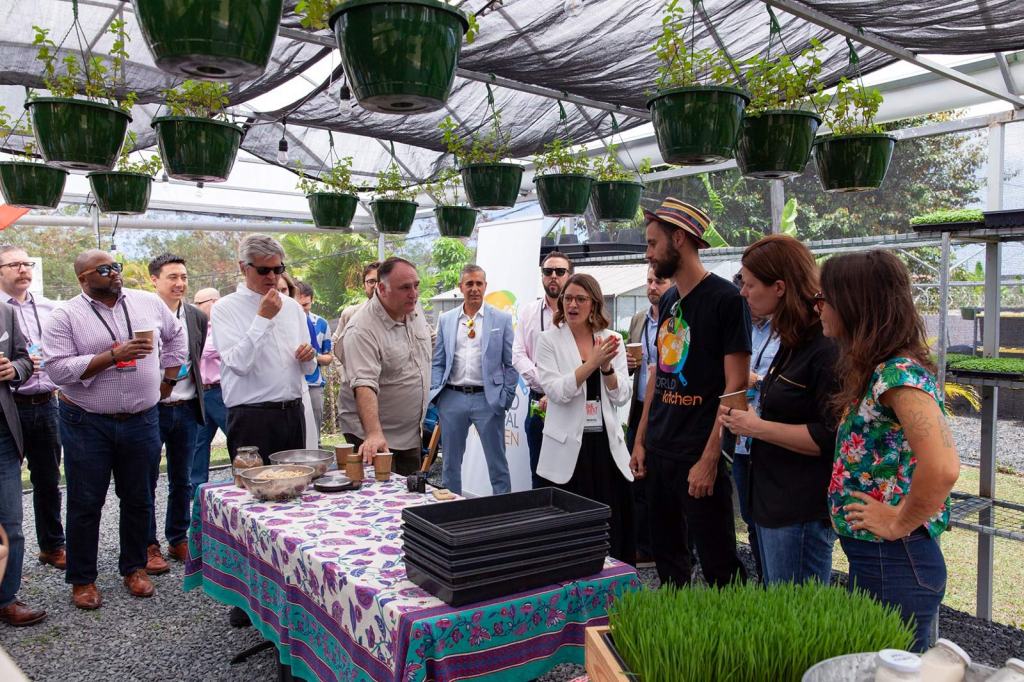
After a decades-long career advancing entrepreneurship in and outside of government and an 11,000-mile road trip connecting with high-growth local startups, Steve Case, co-founder of America Online and chairman and CEO of investment firm Revolution, knows first-hand the wealth of talent and investment-worthy companies that lie outside of the United States’ major coastal cities. His firm’s Rise of the Rest Seed Fund has invested in upwards of 130 such startups.
In his new book, “The Rise of the Rest: How Entrepreneurs in Surprising Places are Building the American Dream,” he shares how people across the country are driving vibrant startup ecosystems. Here, we discuss with Case how the pandemic has shifted the landscape of entrepreneurial growth, how capital and policy can help level the playing field for entrepreneurs in underinvested communities, and how inclusive entrepreneurial ecosystems can help drive American innovation and solve real-world problems.
Entrepreneurs need the support of both capital and policy. You’ve traveled to dozens of cities across the country with the Rise of the Rest Road Trip. What are some examples of support that are doing it right in terms of facilitating bourgeoning entrepreneurial ecosystems?
As you might imagine, I get asked that question often. In fact, one of the main reasons I decided to write my latest book, was to provide a roadmap of sorts for city and state policymakers on how to build robust startup ecosystems AND to deliver examples for would-be entrepreneurs of founders carrying out those plans in regions across the country. The cities that I highlight in the book have largely shied away from trying to replicate Silicon Valley, instead leveraging the unique attributes of their city to fuel startup success.
Chattanooga, for example, sought to innovate on its legacy of freight and logistics. They also created a strong innovation foundation when their mayor implemented the fastest fiber network in the country. Phoenix created a physical space for startups and innovators by developing the once-abandoned Warehouse District. Today, the District helps to create the network density required for a vibrant ecosystem. We’ve seen similar districts and developments in other cities too, and I can’t underscore enough the importance of these hubs. The Embarc Collective in Tampa, Florida, and the Over the Rhine neighborhood in Cincinnati, Ohio, are two others I would point to.
Most investors and entrepreneurs will eventually conclude that some combination of remote connectivity and in-person interaction is needed [for a more inclusive innovation economy].
With respect to capital, we are starting to see both a lot of regional funds and local angel networks emerge to back companies in their own backyard. Indeed, Revolution’s Rise of the Rest put out a report with PitchBook late last year titled, “Beyond Silicon Valley,” which found that 1,445 new venture capital firms were started outside of the Bay Area, New York, and Boston during the last decade. State and local policies are also opening the door for capital with things like angel tax credits and public-private funds to invest in young firms.
Finally, I can’t underscore enough the importance of universities. Arizona State University, under Michael Crow’s leadership, has become a leader in promoting entrepreneurial education and workforce development efforts. And places like the University of Utah’s Lassonde Center now offer co-working and co-living spaces for young people interested in pursuing entrepreneurial or maker-related careers.
Technology, innovation, remote work, and a pandemic-induced movement away from major metros leaves little reason to overlook the talent and opportunity outside of the United States’ major coastal cities. With the barrier and bias of geography removed, what does an inclusive landscape of American innovation and entrepreneurial growth look like? How could it shape a more interconnected, equitable “post”-pandemic economy?
Our efforts to level the playing field for entrepreneurs started more than a decade ago when we launched the Startup America Partnership at the White House in partnership with the Kauffman Foundation. That pioneering effort helped build visibility and momentum around the opportunities for a more inclusive innovation economy, including more regional entrepreneurship.
But the pandemic was a real “shake the snow globe” moment, taking things to a new level. While we don’t know exactly where the flakes will land yet, I think a few things are likely. One, technology can be used to level the playing field of geography, but there is still no replacement for the in-person experience. With the pandemic limiting travel, investors felt more comfortable conducting business over Zoom or other platforms. That was great because it got people outside of their geographic boxes. But part of investing is understanding the climate in which those companies exist and having a network of people that can help the companies they back succeed, including hiring the people they need to scale. My sense is most investors and entrepreneurs will eventually conclude that some combination of remote connectivity and in-person interaction is needed.
Democratizing access to innovation and opportunities in tech is key to mitigating the growing partisan divides in this country.
Two, it’s unclear if this is a windfall for local startups, but it is likely to be an advantage. When the pandemic first hit, and people moved to cities across the country, we initially assumed it would significantly expand the talent pool for rising cities. Then it became clear that larger tech companies were going to be remote for an extended period of time, forcing early-stage startups to compete with companies like Google and Facebook. I think what will happen next is some of the people who have moved will discover how vibrant the startup community is in their new city, and some will decide to leave the big company they were working for remotely and join – or maybe even start – a company that has a strong local presence. We believe that democratizing access to innovation and opportunities in tech is key to mitigating the growing partisan divides in this country. As my friend Mark Muro at the Brookings Institution says in the book: “If most people think the cool stuff is happening somewhere else, they’re ultimately not going to support it. They will turn on it. And we will lose our ability to compete with other nations.”
According to Kauffman’s Early-Stage Entrepreneurship report, Latino entrepreneurs have the highest startup-rate of any group in the U.S., yet they, like other underserved communities, face systemic challenges accessing capital. The Rise of the Rest tour has spent time in Miami, Puerto Rico, and other entrepreneurial ecosystems whose economies benefit from a large, vibrant Latino community. What must change – for mom-and-pop shops to high-growth firms – to get capital flowing into these businesses? How can democratizing investment close the wealth gap for Latinos?
This is so incredibly important. As you note, Latino founders have the highest start-up rate per capita, but only received 2% of venture capital last year. Black founders get only 1%, and women less than 10%. We need to do better as an industry and as a country.
We need to continue to make sure there is diverse representation at all stages of venture leadership. Second, we need to look at how to develop strong economic ecosystems such that people of color are participating in tech/innovation growth. In 2019, Rodney Sampson, nonresident senior fellow at the Brookings Institution’s Metropolitan Policy Program, and Dell Gines, lead community development advisor for the Federal Reserve Bank of Kansas City, published a paper, “Building Racial Equity in Tech Ecosystems to Spur Local Recovery.” They created a pyramid that looked at things like the importance of early exposure, education and skills development, and talent placement, including internships.
Entrepreneurs helped build this country and propel the U.S. from being a fledgling startup nation to becoming the leader of the free world, in large part because we had the largest economy. And that didn’t happen by accident — it was the work of the dreamers and doers who led the way.
Next, we need to celebrate diversity. When we were in Miami, for example, we often heard the slogan that their community was “built by immigrants, led by women.” Diverse representation is clearly a point of pride. And, finally, immigration policy needs to reflect the incredible contributions immigrants have made to our country’s innovation and technology ecosystem. One-fourth of U.S.-based startups were launched by foreign-born founders. America has been the most entrepreneurial nation in part because we’ve been an immigrant-friendly nation. The harder we make it to come here and stay here, the more we will lose great talent to other countries.
What makes you optimistic about the future of tech innovation and American entrepreneurs’ ability to solve global problems?
We’ve taken Revolution’s Rise of the Rest bus to 43 cities and logged more than 11,000 miles. When we get on the bus with founders, civic leaders, elected officials, university professors, no one cares if we are in a blue state or a red state. No one cares who you voted for. Everyone is thrilled to come together to champion innovators and entrepreneurs that are trying to create products, services, and opportunity for their communities. I’m an optimist by nature, and I’ve seen what can happen when you focus on entrepreneurship and innovation. Entrepreneurs helped build this country and propel the U.S. from being a fledgling startup nation to becoming the leader of the free world, in large part because we had the largest economy. And that didn’t happen by accident – it was the work of the dreamers and doers who led the way in the agricultural revolution, and then led the way in the industrial revolution, and then, more recently, led the way in the technology revolution.
We need to keep leaning into the future and backing entrepreneurs who can build the industries of the future. It’s long been said that you can’t solve a problem if you don’t see it. And founders in the middle of the country are focused on solving real problems – things like better health care and healthier food. These are important aspects of our lives, and also, very big industries that are ripe for disruption. And if we can create stronger startup communities in dozens of cities all across America, we can increase our odds that America will continue to be the most innovative and entrepreneurial nation in the world.
